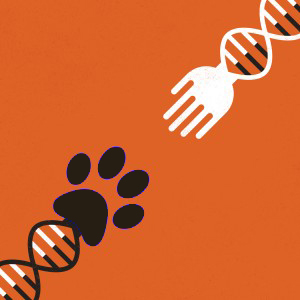What’s the story?
Earlier this month the National Institutes of Health (NIH) announced it is planning to lift its ban on federal funding of some research that creates chimeras by injecting human stem cells into animal embryos.
According to The New York Times, there are two types of experiments being considered for funding: (1) adding human stem cells to the embryos of animals before the embryos reach a stage when organs are starting to develop, and (2) adding stem cells into embryos of animals (other than rodents) where the cells could get into and modify the animals’ brains.
Because nonhuman primates like monkeys and chimpanzees are so genetically close to people, the Times notes, researchers working with such primates who want NIH funding would have to wait until an embryo was further developed before adding human stem cells.

What are chimeras?
Chimeras are animals composed of cells that originate from two or more different species. To create a chimera, scientists introduce cells from one species into the developing embryo or fetus of another. (The name chimera comes from Greek mythology and describes a creature with the head of a lion, the body of a goat, and the tail of a serpent).
What are stem cells?
In the human body there are around 200 different cells. Most cells are a particular type (such as the ceruminous gland cell) and have a specific function (in the case of the ceruminous gland cell, producing earwax). Stem cells differ, though, in that they are relatively undifferentiated and unspecialized—they have not yet obtained a special structure and function. These cells are either multipotent, meaning they can give rise to several other differentiated and specialized cells of the body (for example, liver cells, kidney cells, brain cells) or pluripotent, can give rise to all of the cell types that make up the body. All specialized cells arise originally from stem cells, and ultimately form a small number of embryonic cells that appear during the first few days of development.
Embryonic stem cells are stem cells that have been taken from the inner cell mass of a blastocyst, an embryo of about 150 cells that has not yet implanted into a woman’s uterus. (“Embryo” is the term for humans and other mammals in the stage of development between fertilization and the end of the eighth week of gestation, whereupon the being is referred to as a fetus until the time of birth.)
Are human-animal chimeras already being created?
Yes. Chinese scientists began in 2003 by fusing human cells with rabbit eggs to produce the first human-animal chimeras. A few years later researchers at Mayo Clinic created pigs with human blood in their veins and scientists at the University of Nevada created sheep whose livers and hearts are largely human.
Why would scientists want to expand human-animal chimeras into these new areas?
According to the NIH, animal-human chimeras hold “tremendous potential for disease modeling, drug testing, and perhaps eventual organ transplant.”
What are the ethical concerns about funding chimera research?
There are two overlapping but distinct areas of concern. The first involves government funding of the controversial research. For example, many citizens (rightly or wrongly) find such research objectionable or even repugnant and would prefer their tax-dollars not pay for it. But regulatory agencies have increasingly taken a “we know what’s best” approach and have been dismissive of taxpayer concerns. (By law, the NIH is required to accept comments from the public for 30 days. But almost no one thinks the comments will divert the policy from taking effect this fall.) Societal consent does not determine whether research is morally acceptable, of course. But we should have more input, ideally through our elected representatives, about taxpayer funding of such research.
The second area of concern is more ambiguous. For decades researchers have inserted human genetic material into animals to for the purposes of creating treatments (e.g., insulin) and engaging in xenotransplanation, that is, transplanting nonhuman tissues or organs into human recipients (e.g., pig skin grafted onto burn patients). Many Christian bioethicists consider such uses to be morally legitimate, though a few believe it violates the species barrier instituted by our Creator.
The creation of chimeras, however, is more broadly problematic. As the Christian Medical and Dental Association (CMDA) notes, there are several compelling moral reasons to refrain from applying biotechnology to create chimeras or hybrid organisms that are partly human and partly nonhuman. For instance, we should not be creating intermediate or indeterminate species sharing human and animal genetic material (1 Cor. 15:38-40).
And as David Prentice and Chuck Donovan explain, the intermixing of genetic material becomes more morally problematic when it is done at the embryonic stage:
The problematic aspect is that when added so early in development, the human cells could end up, well, anywhere in the developing animal. In the worst case, the human cells could end up in gonadal tissue and form human gametes (eggs or sperm) within the animal’s body.
Additionally, the human genetic material could affect the brains of the animals:
The breeding of new forms of life—human-animal hybrids—could then be in view, or even the development of an animal with a largely human or fully human brain. NIH’s answer to objections like these seems to be to preclude such animals from breeding (this would likely not be 100 percent effective—just ask anyone who has run an animal facility).
There are also other ethical problems to be concerned about. As Jeffrey Keenan, president and medical director of the National Embryo Donation Center, says, “This technology also runs the risk of violating the principle of informed consent on human subjects” and “could even enable animals to contract human infections and diseases, and vice versa.”
Should Christians completely reject this type of research?
In deciding whether to reject this research Christians should become generally informed about the issues involved (as this article briefly attempts to do), process this information through a biblical framework (for this step see this post and the CMDA’s ethics statement), and then follow the leading of their conscience as guided by the Holy Spirt.
After following this process many Christians will likely be able to follow the CMDA’s lead in endorsing ethical chimeric and hybrid research and technology designed for the benefit of humankind, provided that “these are safe and do not degrade the unique status of humankind” while simultaneously opposing chimeric and hybrid research and technology that “fundamentally alters human nature as designed by God.”
20 Things You Can Do Right Now to Prevent Dechurching
 We’re currently experiencing the largest and fastest religious shift in the history of the United States. But there are practical things we can do inside our local churches.
We’re currently experiencing the largest and fastest religious shift in the history of the United States. But there are practical things we can do inside our local churches.
Jim Davis and Michael Graham have commissioned the largest and most comprehensive study of dechurching in America. Informed by their findings, they’ve written a book and developed this corresponding toolkit with resources to help you address the dechurching phenomenon.
We’re delighted to offer you the ‘Rechurching Toolkit’ for FREE today. Click on the link below to get instant access to this resource—worth $100—and be equipped to understand and address the issues behind dechurching.


































